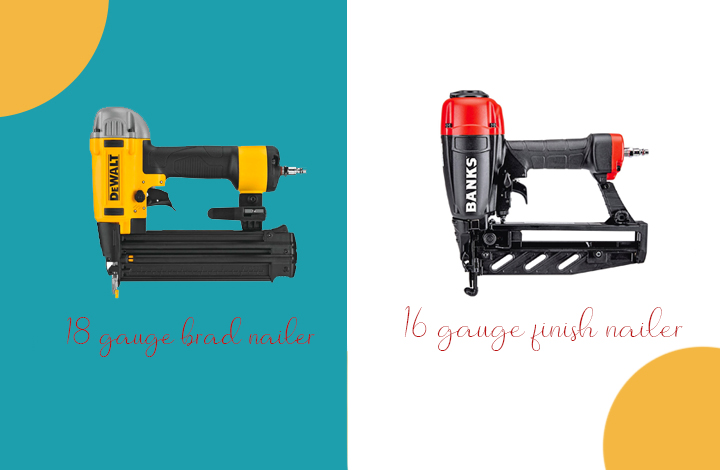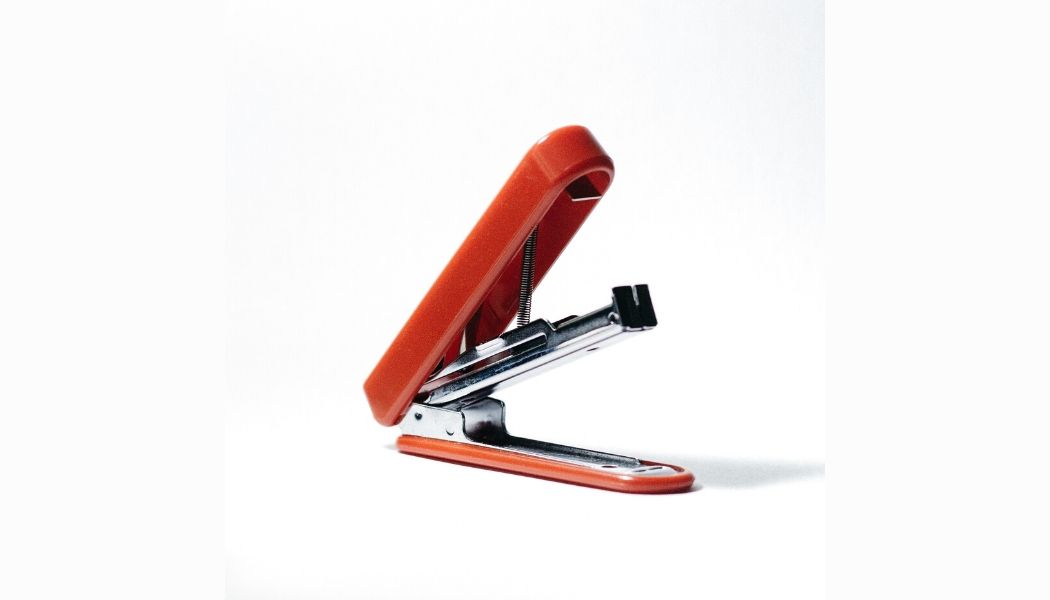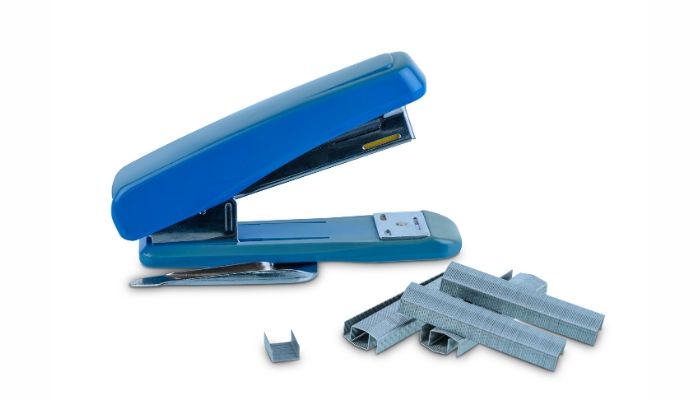A gauge nailer is what you need if you desire faster carpentry work. When purchasing a nail gun, one challenge you will face is choosing which gauge or size of nails will best suit your needs. A nail gun is an ideal tool for your home since it promotes versatility.
What is a 16 Gauge Finish Nailer
A 16-gauge nail gun ranges from 2-2-1/2 inches long with a width of 1/16 inch. This nail gun is ideal when you are working on a thick trim. It helps to offer firm hold compared to thinner-sized nails that can penetrate up to 2.5 inches.
Since this nail gun is thicker, it helps to promote stability and firm hold when nailed into the wood. The materials will not collapse easily when you use 16 gauge nails to join them together. This nail gun is used for finishing work that requires extra holding power to keep the pieces in place.
16-Gauge nail guns are used when you want to construct permanent structures such as installing door frames into drywall and installation of baseboards. Additionally, you can use the nail gun when you want to join planks. It performs well with complex projects compared to standard nail guns.
When not to use a 16-gauge nailer
Even though a 16-gauge nailer is perfect for construction projects, there are reasons why you may not opt for this tool. These include:
- When you want to nail thinner boards since it may split the wood
- When you do not intend to nail materials and woods permanently
What is an 18-Gauge Brad Nailer?
This is a perfect trim gun and it is a smaller version of a 16-gauge nailer. It is used to repair furniture and other fine detail wood jobs. The thickness of an 18-gauge nailer leads to a wider trim application that can be driven into woods that are more than 1 inch in length. It uses 18-gauge nails, which are able to hold common baseboards and thicker boards.
The nails used by this nail gun are less than 2/64 inches in diameter, making them delicate compared to a 16-gauge nail. This means that they can easily be bent using your fingers using minimal force. The 18-gauge brad nailer is perfect for molding and trim attachment because of the thin nature of the nails. It has less holding power, but it is perfect for aesthetic projects.
The nails used by these nailers will not leave big holes behind, making them barely noticeable when nailed into the material. Ensure that you use this nail gun on wooden pieces that are prone to cracking. The 18-gauge brad nails gave thinner diameter because there is no hard contact made when the nailing is done to cause holes into the project.
18-gauge nails are used with brad nailers, which is a tool that offers temporary nailing power and accommodates more delicate jobs. This makes it easy to remove nails after finishing a task by pulling the board using your hands.
When not to use an 18-gauge nailer
18-gauge nails do not offer firm support because of the thinner size. This means that there is a limited application for an 18-gauge nail gun. It is essential to ensure that you determine the size of your project to ascertain if the 18-gauge nailer will be suitable to use.
The perfect job for using an 18-gauge nailer is crown molding but it has to be thin and lightweight. Heavy workpieces may be hard to attach to drywall when using this nail gun. Additionally, the nail is unable to penetrate thicker materials.
The differences between an 18-gauge nailer and a 16 gauge nailer are as follows:
- The 18-gauge nailer is less versatile compared to a 16-gauge nailer in terms of usage. A 16 gauge nailer ensures that the nails can penetrate thicker boards to ensure that they are secured in place. On the other hand, an 18-gauge nailer needs trim molding to offer the best outcome.
- The nail sizes for each nail gun are measured in diameter. The higher the gauge number, the thinner the nail required. This means that the 18-gauge nail gun can accommodate more nails compared to the 16-gauge nail gun.
- The 16-gauge nail gun can easily infiltrate thicker surfaces while the 18-gauge nail gun has superior versatility when it comes to detailing work. The 16-gauge nail gun also has better penetrating power over thicker planks compared to the 18-gauge nail gun.
- The 16-gauge finish nailer can be used when you have hardwood, plywood, MDF, softwood, and baseboard. On the other hand, the 18-gauge nailer can be used when you have non-MDF woods and softwood
- The 16-gauge finish nail gun is best used for carpentry works such as heavy molding and furniture while the 18-gauge brad nailer is best used for delicate woodwork
- The 16-gauge finish nail gun can be pneumatic, cordless, and gas-powered while the 18-gauge brad nailer can be electric, cordless, and pneumatic
- The holding capacity for a 16-gauge finish nailer is for hardwoods while that for an 18-gauge brad nailer is for baseboards
- The 16-gauge nail gun has a better penetrating power compared to the 18-gauge brad nailer
- The 16-gauge nail gun is more reliable in preventing thick woods from collapsing after nailing. On the other hand, the 28-gauge nail gun is less stable to hold thicker surfaces
Final Thoughts
The 18-gauge brad nailer and the 16-gauge finish nailer may look the same but they have their differences. This article will help you decide which nail gun to pick between 16-gauge and 18-gauge since these are used for different purposes



Leave a Reply